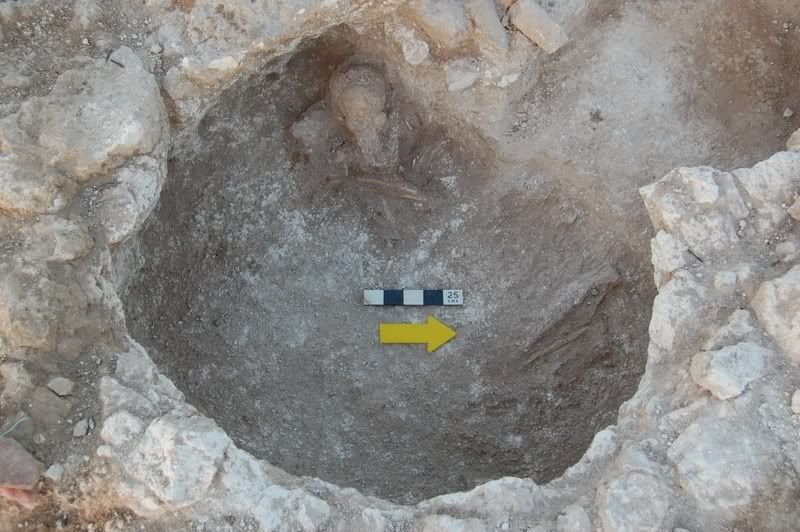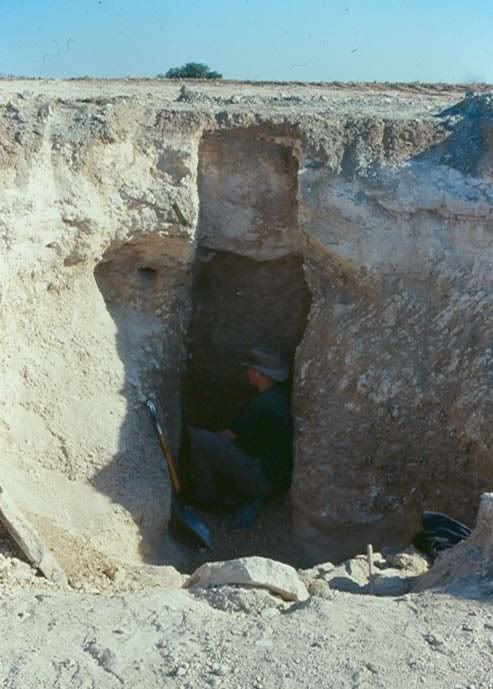Solving the Enigma of Kalavasos
Most of us tend to think of the Bronze Age, Iron Age, and Classical period when we think of Mediterranean region archaeology, but the civilizations of these periods were built on the foundations of settlements that came before them. Who were the people who came before? What did they build? What did they eat? How, who or what did they worship? These are the kinds of questions that a team of archaeologists are trying to answer through excavation of a Late Neolithic settlement site in Cyprus known as Kalavasos-Kokkinoyia in the summer of 2009. They will explore surface features of a possible structure, man-made pits and subterranean chambers and tunnels. How and why were they made? What was their significance?
The Site
The site of Kalavasos-Kokkinoyia is situated close to the south coast of Cyprus, a couple of kilometers inland from the Mediterranean Sea. Its name arises from its location in fields belonging to the modern village of Kalavasos, the toponym Kokkinoyia referring to the red soil of the locality (Greek kokkinos=red). Kokkinoyia is a settlement of the Late Neolithic period (4500-3800 cal. B.C.), a period otherwise known as the Ceramic or Pottery Neolithic because it follows (with an hiatus) the Aceramic, Pre-pottery or Early Neolithic period (ca. 8000-5500 cal. B.C.) in Cyprus. The Cypriot Late Neolithic is also sometimes referred to as the Sotira culture, named after the first site of this period to be extensively excavated. The period is succeeded by the Early Chalcolithic period (3800-3500 cal. B.C), and ceramics and other aspects of material culture indicate a large measure of continuity between the two periods.
The site of Kokkinoyia was first discovered in the 1940s by Porphyrios Dikaios of the Cypriot Department of Antiquities, and in 1947 he excavated both here and at the adjacent Late-Neolithic-Chalcolithic site of Kalavasos-Pamboules. Dikaios established that Kokkinoyia comprises a series of enigmatic pits, many of which he felt had been used as work areas or habitation units. More recent excavations elsewhere have shown that Cypriot Late Neolithic sites normally have upstanding buildings, so Kokkinoyia appeared an interesting anomaly as it lacked buildings.
Work has resumed at Kokkinoyia over the past four years, with several small seasons of excavation having been conducted by the University of East Anglia. So far, the 15 or so newly excavated pits do not give the impression of having served as habitations or workplaces, calling into question the interpretation of the previous excavator. Indeed, the discovery in the 2006 season of a possible structure (building?) of a type similar to that found at the Early Chalcolithic site of Kissonerga-Mylouthkia, may indicate that Kalavasos-Kokkinoyia is transitional between the end of the Late Neolithic period and the Early Chalcolithic period. Even so, as pottery and other items from the Kokkinoyia pits share similarities in form and decoration with those from Late Neolithic villages, it is, as yet unclear, what type of site Kokkinoyia actually is and this is one of the questions that the expedition would like to address in the 2009 season.
In addition to the more conventional pits and the possible structure, a complex of several subterranean chambers, connected by tunnels, has come to light at Kokkinoyia and is of unknown purpose. Because it is hard to imagine how the complex could be put to practical use, the reason for its creation may lie in the realm of the mystical. Inexplicable souterrains of similar type are known from other broadly contemporary sites on the island.
The Upcoming Season
In 2009, the expedition plans a four-week season in April, when they will extend excavations between two distinct zones (the possible building and individual chambers in one zone and the chamber and tunnel complex in another).
The project is conducted under the overall direction of Dr Joanne Clarke of the University of East Anglia, a lecturer in archaeology and a specialist in Cypriot prehistory, and the field director, Dr Paul Croft, a research fellow of Edinburgh University (Archaeology) They are calling on students and volunteers to join them in this cutting-edge research. Participants will be expected to undertake not only on-site excavation work, but also finds processing as required. It is envisaged that each week will consist of five and a half working days and one and a half non-work days, the latter involving some combination of travel to sites, museums and other places of interest, as well as free time.
Are you interested in doing some meaningful work in actually reconstructing a piece of human history? If so, you can join this project by going to www.uea.ac.uk/art/kalavasos for more information about the 2009 season and how to apply.
Labels: Cyprus archaeology, Kalavasos Kokkinoyia, neolithic archaeology





0 Comments:
Post a Comment
<< Home